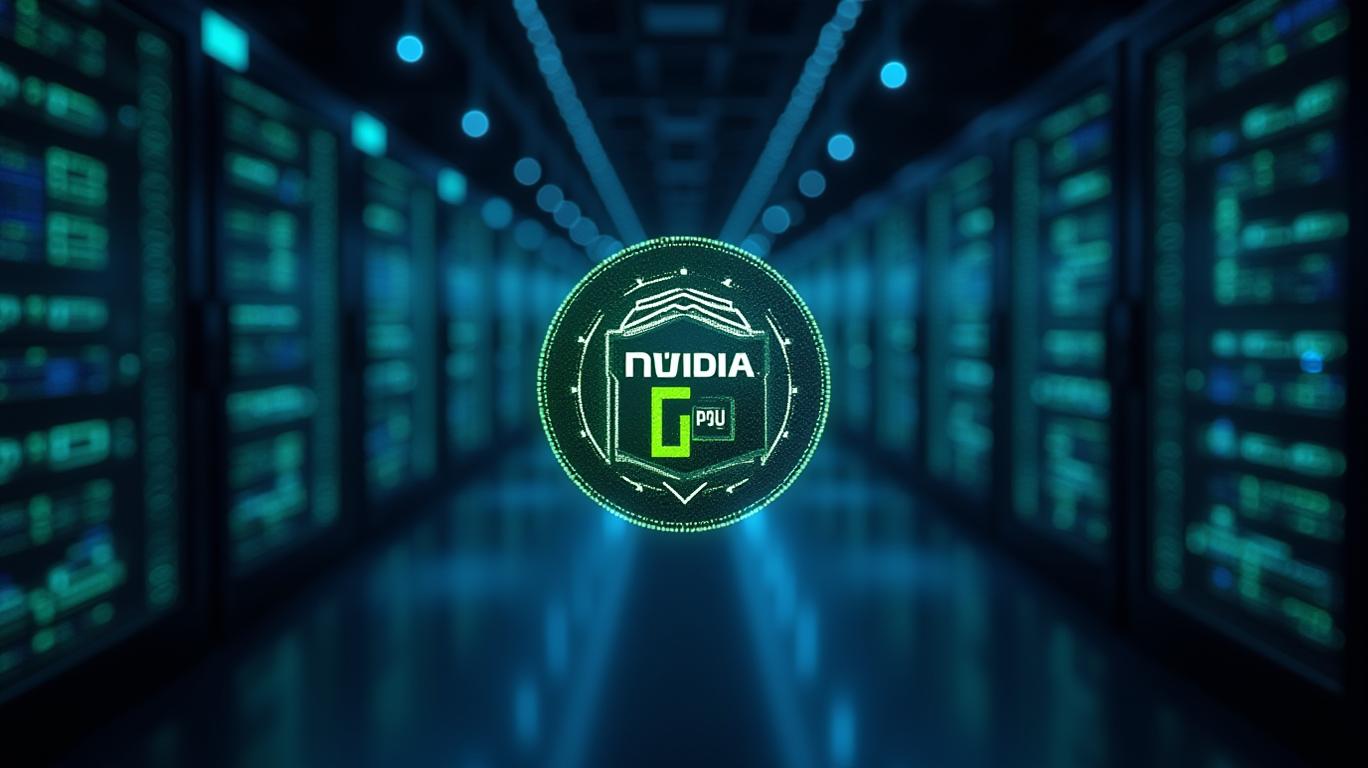The AI Trade's New Landscape: Navigating Winners in a Shifting Tech Landscape
The global AI race is no longer a zero-sum game. While U.S. tech giants like NVIDIA and Meta once dominated headlines, emerging competitors—particularly Chinese firms like Alibaba and DeepSeek—are reshaping the playing field. Analysts now argue that the AI trade will have “multiple winners,” but success hinges on navigating geopolitical tensions, capitalizing on innovation, and outpacing commoditization. Here’s how the top picks stack up in Q2 2025.

NVIDIA (NVDA): The Chip Titan in Transition
NVIDIA’s dominance in AI chips remains unmatched, with its Blackwell architecture powering over 25% of its revenue. Yet growth has stalled as rivals like DeepSeek undercut costs with cheaper H100 and H800 chips. Trade restrictions on China—a key market—have further complicated its trajectory.
CEO Jensen Huang’s prediction that next-gen AI models will require 100x more computational power offers long-term hope, but investors are wary. Analysts caution that if Q1 FY26 revenue trends continue, shares could drop further. For now, NVIDIA remains a “buy the dip” story, but its future depends on sustaining innovation amid intensifying competition.
Meta Platforms (META): From Metaverse to AI Leader
Meta’s pivot from the struggling Metaverse to AI-first strategies is paying off. Its open-source LLMs, validated by DeepSeek’s success, have driven record Q4 FY25 profits. AI-enhanced advertising now fuels growth, with Instagram and Facebook metrics rebounding.
However, CapEx now outpaces revenue growth, raising concerns about overinvestment. CFO Susan Li’s reassurance of “clear opportunities over time” is tempered by the stock’s fragile 2025 gains. The key question: Can Meta monetize its open-source models without sacrificing growth?
Palantir (PLTR): Government Contracts Fuel Growth—For Now
Palantir’s AI-driven enterprise solutions have propelled it to S&P 500 stardom, with net income doubling to $463M in 2024. Its 29% YoY sales growth in 2024 and 2025 forecasts of ≥30% gains stem largely from U.S. government contracts.
But here’s the catch: President Trump’s “DOGE” policies could slash Pentagon spending—a critical revenue stream. While Trump’s recent “not now” stance on defense cuts offers temporary relief, political shifts could upend its trajectory.
Investors must weigh Palantir’s niche success against its overreliance on a single customer base. It’s a high-risk, high-reward bet on government tech spending.
Salesforce (CRM): Lagging in the AI Sprint
Salesforce’s Agentforce AI tool has secured over 5,000 deals since late 2024, but financial impacts remain minimal. Revenue growth is decelerating, with Q4 FY25 sales rising to $10B but slowing further.
The challenge? Monetizing AI without alienating its core CRM customer base. CEO Marc Benioff’s vision of autonomous agents is bold, but execution risks linger. Until Agentforce delivers tangible profits, Salesforce will trail peers in this AI race.
Alibaba (BABA): Riding China’s AI Wave
Alibaba’s $52.5B AI investment over three years has yielded results: cloud revenue surged 18% YoY in Q4 FY25, and open-sourcing tools like QwQ-32B has boosted competitiveness. Yet U.S. chip export controls and domestic consumption slumps cloud its outlook.
The stock’s 2025 record highs reflect optimism about China’s AI potential, but macroeconomic headwinds and trade tensions could reverse gains. Alibaba is a bet on Beijing’s ability to navigate U.S.-China tech rivalries.
Strategist Insights: The AI Trade’s New Rules
- Global Competition Heats Up: U.S. firms must out-innovate Chinese rivals like DeepSeek, which is undercutting GPU demand with cost-efficient models.
- Trade Policy Wildcards: Trump’s $500B Stargate project could boost U.S. AI competitiveness, but his erratic trade policies (e.g., chip export bans) risk destabilizing markets.
- Agentic AI and Beyond: Salesforce’s Agentforce and autonomous driving robotics signal the next frontier—companies failing to innovate here risk obsolescence.
Conclusion: The AI Market’s Dual Pathways
The AI trade isn’t about picking a single winner—it’s about balancing growth, risk, and geopolitical resilience. NVIDIA and Meta, despite their challenges, retain structural advantages: NVIDIA’s tech leadership and Meta’s advertising dominance are hard to replicate. Meanwhile, Palantir and Alibaba offer high-growth niches but face execution and regulatory hurdles. Salesforce, lagging in monetization, is the weakest link.
The data underscores this divide:
- NVIDIA’s Blackwell architecture could sustain demand if advanced models require exponential compute power.
- Meta’s ad revenue rose 15% YoY in Q4 FY25, a testament to AI’s revenue-generating power.
- Palantir’s 2024 net income doubling highlights enterprise AI’s potential, but political risk looms.
- Alibaba’s cloud revenue jump (18% YoY) signals China’s AI momentum, despite trade barriers.
In the end, the AI trade’s “multiple winners” will be those that innovate fastest while weathering macro and geopolitical storms. For investors, this means embracing a diversified portfolio—placing bets on proven leaders like NVIDIA and Meta, while hedging with growth plays like Palantir and Alibaba. The stakes have never been higher, but the payoff for winners could redefine tech’s future.


_442a2dcc1749832873286.jpeg)
_e68fac6d1749831664430.jpeg)
















